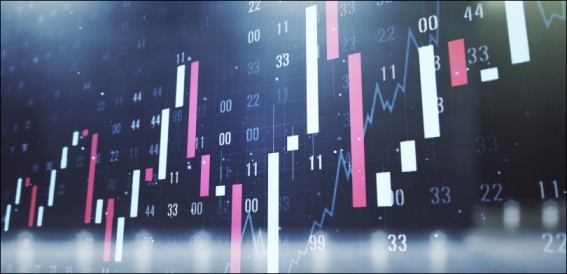Trading futures offers exciting profit opportunities through price fluctuations in commodities, stocks, and other assets, but it also comes with increased risk. Risk management differentiates speculators from investors, enables you to reduce losses, protect your capital, and ultimately increase profits over the long term.
This article will take you through the essential risk management strategies for futures traders. It will explore methods to grasp risk management strategies in futures trading and provide practical tips for traders looking to effectively manage risk to maximise their trading success.
Step into the world of Futures & Options — Open your Demat account
Why Risk Management Matters in Futures Trading
Volatility is a built-in feature of futures markets. Prices can move fast and far, sometimes within minutes, based on economic reports, geopolitical developments, or changes in sentiment. As a futures trader for risk management, you need discipline to cope with price movement from news and avoid major losses. Without proper risk management, futures trading can quickly drain your capital, even with just a few small mistakes. That makes it important to stay safe from large mark-to-market losses first, notwithstanding your trading style or strategy. With good risk management processes, you can ride market amplitude, adjust, and prosper over the long haul.
Key Principles of Risk Management in Futures Trading
Several fundamental principles guide effective risk management strategies regarding managing risk in futures trading. Let’s take a closer look at these key principles:
Position Sizing
Position sizing is how much money you put into a trade. Position sizing should be one of the most important aspects of risk management, as it helps ensure that a single bad trade does not affect too much of your portfolio.
For instance, if you take on excessive risk in a single trade, even a small loss could eliminate a considerable proportion of your capital. A wise future trader from risk management always ensures that no single position is too big a risk based on the total account capital available. Many successful traders limit their risk to only 1-2% of their account balance for each trade.
Use of Stop-Loss Orders
A stop-loss order is an important tool in risk management and futures trading. It lets you immediately leave a position to avoid greater loss if the market shifts against you by a certain level. Setting stop-loss orders at proper levels will help you to limit large losses so that no single adverse price movement will cripple your capital. Stop-loss orders should be set based on technical factors, like support & resistance levels or volatility. The best futures trading strategies place stop-loss orders so they will not be triggered through normal market movements. Still, at the same time, you are protected without significant losses from large market movements.
Diversification
Another critical aspect of risk management in futures trading is diversification. The idea is to reduce the risk of a significant loss by having your investments spread across different futures contracts, asset classes, or markets. Take crude oil as an example—if you are only trading one giant futures contract, and a supply shock or geopolitical crisis occurs, you could find yourself with undesirable losses. However, if you were trading several different commodities, stock indices, and currencies, you are better prepared for volatility and reduce your overall portfolio risk.
Risk/Reward Ratio
An essential element of any top futures trading strategy is a favourable risk/reward ratio. This ratio compares the possible loss on a trade with the possible profit. An acceptable risk/reward ratio allows you to be sure that, even if a significant percentage of your trades were to lose. Ultimately, the amount of money earned on the profitable trades would exceed the total lost value on the losing trades. Most successful traders look to attain a risk/reward ratio of at least 1:2, meaning they are willing to risk ₹1 to make a potential ₹2. If proper risk/reward ratios are established and adhered to, the trader is more likely to protect their capital and maximise profitability over the long run.
Advanced Risk Management Strategies
For traders seeking to optimise their risk management, here are some advanced strategies:
Options as a Hedge
In some instances, you can hedge your futures position using options. For example, you could benefit from buying options on a commodity futures contract to hedge your downside risks. Furthermore, options provide the flexibility to navigate unfavorable market shifts and secure profits in volatile conditions..
Portfolio Hedging with Futures Contracts
If you have considerable exposure to a specific asset class or category, you can hedge that risk using futures contracts. For example, if you hold a large portfolio of stocks, you can hedge against a possible market downturn by selling futures contracts on a broad market index. Furthermore, hedging allows you to maintain a balanced portfolio while mitigating the risks of unfair movements.
Automated Risk Management Tools
Thanks to technology, it’s becoming easier for traders to implement a more sophisticated risk management method. Automation of risk management tools, such as algorithmic trading systems or trade alerts, can simplify the process. These tools can execute trades or close positions based on pre-set conditions. The point is that these tools allow you to remove emotions from the decision-making process. Thus, you are assured the risk management parameters you adhere to will be executed without hesitation.
Conclusion
Effective risk protection measures such as setting trade parameters and allocating money wisely help traders save their capital and succeed in future trading. The best futures trading strategy has the overarching plan of managing risk so that you can trade futures with an allocation in mind, tackling volatility confidently. Effective risk management in futures trading relies on mastering self-discipline, embracing continuous learning, and adapting to ever-changing market conditions.
If you are committed to succeeding as a futures trader, make it part of your routine to include risk management strategies for a powerful step in your growth process. For trading futures, Religare Broking has ample tools, discoveries, and support to facilitate your success.






